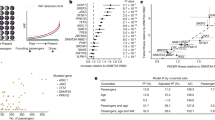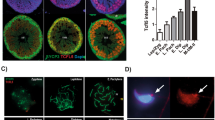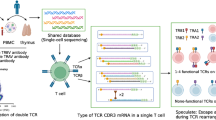Abstract
MOUSE t haplotypes represent a variant form of chromosome 17 that has evolved the ability to propagate through natural populations by the phenomenon of 'transmission ratio distortion' (TRD), in which heterozygous +/t males transmit their t-carrying chromosome to 95% or more of their offspring1,2. Although multiple t-associated loci have a role in expression of this phenotype, only one—the t complex responder (Tcr) locus—is responsible for determining which of the two homologues of chromosome 17 will be transmitted at a high ratio3. A candidate gene (Tcp-10b) for Tcr that is expressed in both meiotic and post-meiotic male germ cells has been cloned4. But for this candidate gene to function as the haploid effector of TRD, the t-allele of this gene (Tcp-10bt) must express a unique product in a haploid-specific manner. Here we show that a change in the splicing pattern ofTcp-10bt transcripts occurs during sperm differentiation. This change results in a unique allele-specific and haploid-specific transcript which could encode a variant polypeptide that would fulfil the conditions required of the Tcr effector of TRD.
This is a preview of subscription content, access via your institution
Access options
Subscribe to this journal
Receive 51 print issues and online access
$199.00 per year
only $3.90 per issue
Buy this article
- Purchase on SpringerLink
- Instant access to full article PDF
Prices may be subject to local taxes which are calculated during checkout
Similar content being viewed by others
References
Silver, L. M. A. Rev. Genet. 19, 179–208 (1985).
Klein, J. Natural History of the Major Histocompatibility Complex (Wiley, New York, 1986).
Lyon, M. F. Cell 37, 621–628 (1984).
Schimenti, J. et al. Cell 55, 71–78 (1988).
Lyon, M. F. Cell 44, 357–363 (1986).
Bullard, D. C. & Schimenti, J. C. Genetics 124, 957–966 (1990).
Schimenti, J., Vold, L., Socolow, D. & Silver, L. M. J. molec. Biol. 194, 583–594 (1987).
Rosen, L. L., Bullard, D. C., Silver, L. M. & Schimenti, J. C. Genomics 8, 134–140 (1990).
Ausubel, F. et al. Current Protocols in Molecular Biology (Wiley, New York, 1987).
Wolgemuth, D. J., Gizang-GinsDerg, E., Engelmyer, E., Gavin, B. J. & Ponzetto, C. Gamete Res. 12, 1–10 (1985).
Author information
Authors and Affiliations
Rights and permissions
About this article
Cite this article
Cebra-Thomas, J., Decker, C., Snyder, L. et al. Allele- and haploid-specific product generated by alternative splicing from a mouse t complex responder locus candidate. Nature 349, 239–241 (1991). https://doi.org/10.1038/349239a0
Received:
Accepted:
Issue date:
DOI: https://doi.org/10.1038/349239a0
This article is cited by
-
A meiotic driver alters sperm form and function in house mice: a possible example of spite
Chromosome Research (2022)
-
Identification of TCP10L as primate-specific gene derived via segmental duplication and homodimerization of TCP10L through the leucine zipper motif
Molecular Biology Reports (2008)
-
Isolation of candidate hybrid sterility 1 genes by cDNA selection in a 1.1 megabase pair region on mouse chromosome 17
Mammalian Genome (1997)
-
Functional analysis of a t complex responder locus transgene in mice
Mammalian Genome (1992)
-
Distortion of transmission ratio by a candidate t complex responder locus transgene
Mammalian Genome (1992)



